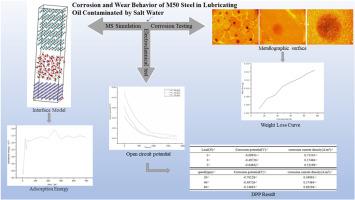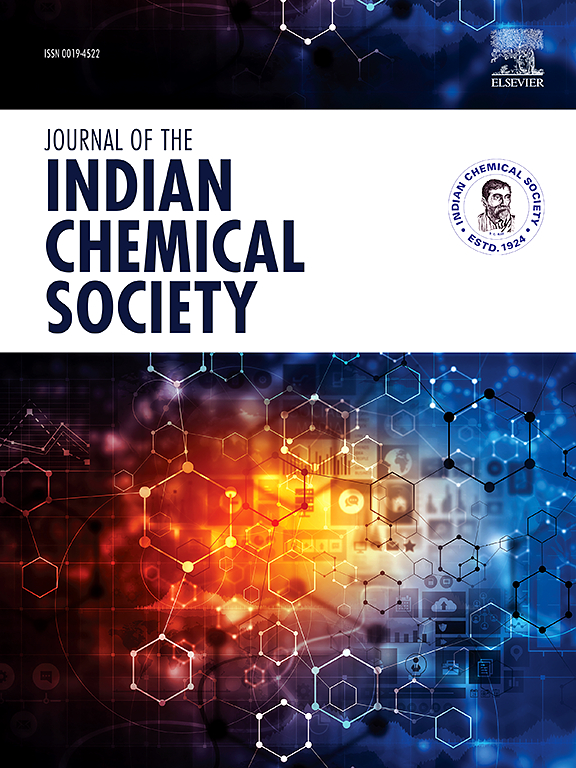Study on corrosion behavior and first-principle analysis of M50 steel in lubricating oil contaminated by salt water
IF 3.2
4区 化学
Q2 CHEMISTRY, MULTIDISCIPLINARY
引用次数: 0
Abstract
The corrosive wear of M50 steel in lubricating oil contaminated with saline is a form of wear that often occurs within the main shaft bearings of aviation engines carried by aircraft working at sea. In the present paper, the corrosion behavior of M50 steel in lubricating oil contaminated with saline was studied. The open-circuit potential, polarization curve and impedance spectrum were analyzed by rotating electrochemical corrosion wear test. A three-layer interface microscopic molecular model was established with Materials Studio to simulate the dynamic corrosion evolution process of M50 steel self-matching pairs and the adsorption energy was calculated. The results show that the corrosion type is pitting corrosion. With the increase of saline concentration, the corrosion area becomes wider and shallower, and the size of the pitting core gradually decreases. The weight loss of M50 steel increases over time, but the trend slows down, which is also shown in the MS simulation results. Electrochemical tests show that the tribocorrosion of M50 steel is related to load, speed. As the load increases, the corrosion rate decreases. And, as the speed increases, the corrosion rate increases. This has practical significance for extending the understanding of tribocorrosion of M50 steel in marine atmospheric environments.

M50 钢在受盐水污染的润滑油中的腐蚀行为研究和第一原理分析
M50 钢在受盐水污染的润滑油中的腐蚀磨损是在海上工作的飞机所携带的航空发动机主轴轴承中经常出现的一种磨损形式。本文研究了 M50 钢在含盐润滑油中的腐蚀行为。通过旋转电化学腐蚀磨损试验分析了开路电位、极化曲线和阻抗谱。利用 Materials Studio 建立了三层界面微观分子模型,模拟了 M50 钢自匹配对的动态腐蚀演化过程,并计算了吸附能。结果表明,腐蚀类型为点腐蚀。随着盐水浓度的增加,腐蚀区域变宽变浅,点蚀核心的尺寸逐渐减小。随着时间的推移,M50 钢的重量损失会增加,但趋势会减慢,这在 MS 模拟结果中也有所体现。电化学测试表明,M50 钢的摩擦腐蚀与载荷、速度有关。随着载荷的增加,腐蚀速率降低。而随着速度的增加,腐蚀速率也会增加。这对于扩展对海洋大气环境中 M50 钢摩擦腐蚀的理解具有实际意义。
本文章由计算机程序翻译,如有差异,请以英文原文为准。
求助全文
约1分钟内获得全文
求助全文
来源期刊
CiteScore
3.50
自引率
7.70%
发文量
492
审稿时长
3-8 weeks
期刊介绍:
The Journal of the Indian Chemical Society publishes original, fundamental, theorical, experimental research work of highest quality in all areas of chemistry, biochemistry, medicinal chemistry, electrochemistry, agrochemistry, chemical engineering and technology, food chemistry, environmental chemistry, etc.

 求助内容:
求助内容: 应助结果提醒方式:
应助结果提醒方式:


